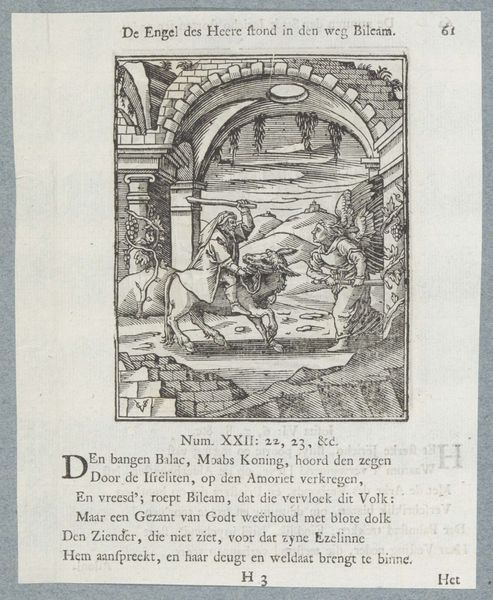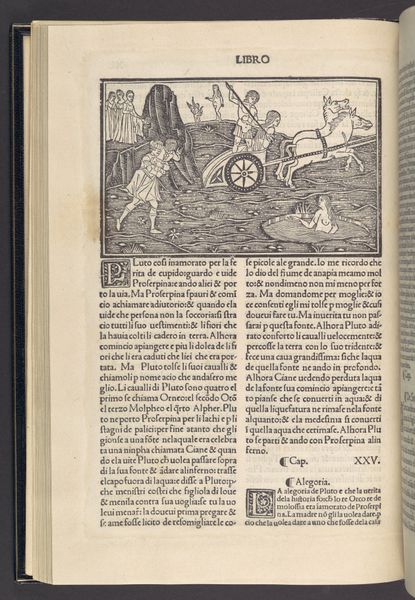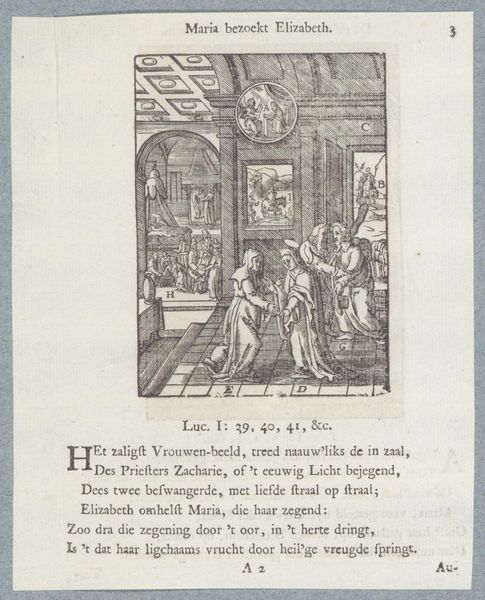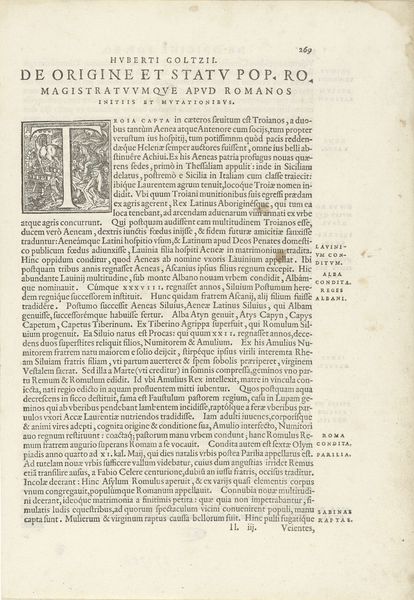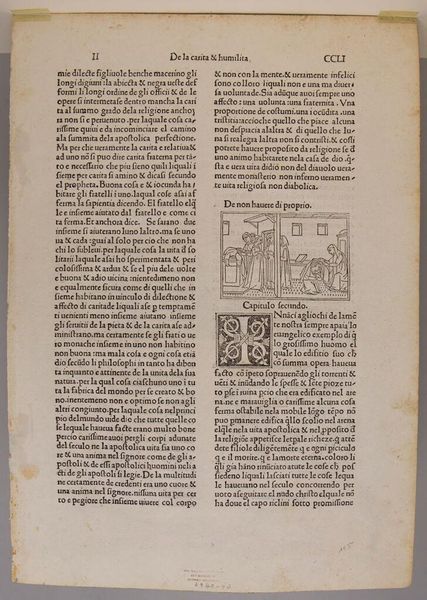
Phonurgia nova, sive conjugium mechanico-physicum artis & natvrae paranympha phonosophia concinnatum . . . 1673
0:00
0:00
print, engraving
#
baroque
# print
#
line
#
history-painting
#
engraving
#
historical font
#
columned text
Dimensions: H: 13 3/8 in. (34 cm)
Copyright: Public Domain
Editor: Here we have Athanasius Kircher's engraving from his *Phonurgia nova* of 1673. It shows a rather complex musical contraption, and there’s something otherworldly and, frankly, a little intimidating about the scene. What do you see in this piece, beyond just a historical illustration? Curator: I see a convergence of art, science, and philosophy deeply embedded in its historical context. Kircher was fascinated by the hidden connections between sound, space, and human perception. The machine he depicts isn’t just a musical instrument; it’s a microcosm of the universe as understood in the 17th century, reflecting a belief in the power of music to influence emotions and even shape reality. Editor: So, you're saying it’s not just about the music itself? Curator: Precisely. Consider the historical context. This was a time of immense political and social upheaval, the Thirty Years' War had just ended, and Europe was grappling with religious and scientific revolutions. Music, for Kircher, represented harmony in a world desperately seeking order, a possible bridge between faith and reason. Think about how these elaborate instruments might serve to marginalize common folk or consolidate power through performance spectacles. What socioeconomic messages were being delivered, implicitly? Editor: That's a perspective I hadn’t considered. It does make me wonder about access to this "harmony." Was it intended for everyone? Curator: An excellent question. Often these advancements disproportionately benefited the elite. Analyzing this artwork through the lens of power structures prompts a re-evaluation of its intent and the social implications surrounding its use. It's an exercise in historical empathy but also in critical analysis. Editor: I’m starting to see it as less of a neutral illustration and more of a statement—about control, knowledge, and perhaps even social engineering through art. Curator: Exactly. Art, even seemingly technical illustrations like this, can be deeply embedded in power dynamics. By examining these intersections, we gain a richer understanding of both the art and the society that produced it. Editor: It really makes you think about what's *behind* the image, not just *in* it. Thanks for opening my eyes.
Comments
No comments
Be the first to comment and join the conversation on the ultimate creative platform.

